With our faddish nature I’m always surprised fishermen aren’t more fashion conscious. Our weakness has always revolved around something new as a wholesale fix for all our fishing ailments.
In the Eighties it was Polypropylene – lighter than air and a couple of turns on a hook shank would make a fly float all day. The Nineties were typified by gummy latex and a veritable flotilla of eye catching synthetics.
The last decade was dominated by pearlescent, opalescent, and oily duck’s arse – and the renewed promise that only a couple strands would make a fly unsinkable.
Now it’s the Ultraviolet spectrum and every vendor is hell-bent on squirting chemicals we can’t detect (and of dubious UV qualities) on everything from salmon eggs to dry fly hackle, claiming the “fish killing qualities of the ultraviolet are virtually infinite.”
… and in all this frenzy, Reed F. Curry’s book – “The New Scientific Angling, Trout and Ultraviolet Vision” makes it’s debut.
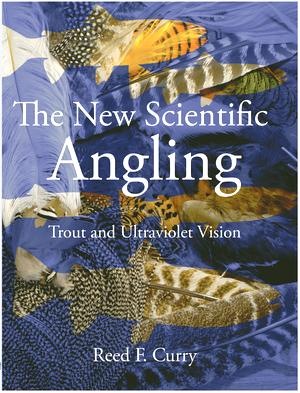
Reed’s task is Herculean. Bring the stuffy lab-coated world of ocular physics out of its chaste mathematical surroundings, remove the obfuscation of scientific jargon, and adapt the material for fishermen, then drop the polished treatise onto the coffee table – there to compete with Playboy, People, and Guns N’ Ammo.
It’s a singular work, and his timing is impeccable.
Those of you familiar with The Contemplative Angler recognize that Reed’s quiet and biting humor is a common thread throughout his work; how he could remain stiff-lipped and scholarly was surely going to be a trial … and I was pleased he failed … miserably.
The book is reminiscent of a High School science text with the salient points highlighted by color in the margins. In this case, Reed spills both wit and angling reality into the colored boxes, a clear demark between the Science and Angler-humorist.
Fly tiers will read it like Playboy. Pictures first and text second – and the concepts of UVA (Ultraviolet absorption), UVR (Ultraviolet refection), and VIS (visible light) are featured in multiple pictures per page – which keeps the scholarly segments easy to absorb and engaging.
There is an enormous amount of real meat for the angler, and the segment of greatest interest to me was the discussion of “pattern matching” that answers that most elemental of all questions, “Why do fish think this is food?”
As the Quill Gordon floats within the trout’s range of vision – and here I am going to avoid the complex issues of Snel’s Circle, reflection and refraction and simply assume that the visual sensory input is very detailed and complete – the trout’s brain receives input of the fly exactly as it appears from below, in the full trout spectrum. VIS and UVR. The trout brain now gathers the elements that are attached to each other – hackle, body, wings, tail – ignoring floating particles of foam nearby, and assumes that it forms the whole unit. Against this gestalt the trout brain uses pattern matching, just as we would. The order of conditions is presumably the same:
- First, check for danger. Is the object a known threat? “No.”
- Next , check for food. Is the object a food item? “Yes,” “No,” “Maybe.”
And that is the crux of it. If as anglers we can establish “Maybe,” we have won the first part of the game. “Maybe” can indicate insufficient information which may lead to further investigation through other trout senses – Taste and Touch. In order for the fish to touch and taste, he takes an object in his mouth, hands being in short supply.
The section on “the composite insect” and how it fits into a fish’s pattern recognition “database” is enough to send any fly tyer into a reproductive frenzy.
Schweibert, Flick, and Swisher & Richards all gave us wonderful tomes about mayflies, most with wings intact and inviolate. Reed suggests that the all important “Maybe” that spurs trout to eat – may lie in the thousands of images of mayflies (caddis, etc) stored in memory.
Crippled, in the water and out, half in, struggling, fluttering, landing – double the images to account for the broadside view, quadruple that to take in the fore and aft of all the above, and you quickly get to millions of possible watery lumps that “maybe” food.
Which is why those old archaic flies we know don’t work like the McGinty, the Royal Coachman, and the Trude – all non-scientific flies, get eaten, and often.
“The trout’s pattern for mayfly wings, therefore, must be quite vague, perhaps simply a small extension from the body, light in color and displaying a hint of UVR. A trout that only eats mayflies with perfectly formed wings is missing a lot of food.”
As humans we view insects and their imitations with only the visible spectrum (VIS). Fish can use both visible and UV light to recognize prey, and at depth or during low light conditions where both are active, a mixed image is likely.
“Through UVR in combination with VIS, trout have an opportunity to see fine details of the chitin, the outer surface of an insect’s body and wings. How deep this vision goes depends, of course, on the individual trout, the conditions, and the insect.
… (trimmed by KB)
So, surface texture is significant because, despite what we see with our more limited vision, the trout can detect in the UV that natural flies are not perfectly smooth.”
The book’s photography covers the full gamut of angling gear as well as specific sections dealing with insects, fly tying materials, and the UV signature of colors in general.
Baitfish get some UV love as well. Rather than pile on more UV materials onto a hook shank – knowing which components of smaller fish are most visible in the UV spectrum suggests a thoughtful placement of materials – versus the “more is better” broad paintbrush.
… and while Reed answers more questions than he poses, it’s plain that both vision and perception suggest there is a great deal of unexplored territory left in the classic stalk and seduction of trout – and any other UV equipped gamefish.
This is a wonderful reference work for all anglers, likely to turn some of your notions about fly fishing on their ear. Careful study of the colors and their qualities under UV will assist in fly selection, clothing choice, and fishing qualities like retrieve and how depth may play into fly selection.
… and for the fly tier the color plates alone justify inclusion into your reference library. An essential book if you’re attempting to navigate the vendor offerings and add UV aids in insect imitations.
Me? My next fishing vest will be Bright Yellow … waders painted with a similar retina scorching disjointed color pattern – a not so subtle mix of the Bismarck and Elvis.
Pikeminnow rolling lazily between my feet as I’m completely invisible …
Amazon lists the book at $27.95, with only two copies left. Jump on it.
Full Disclosure: Singlebarbed did trade two (2) pairs of Sixth Finger Scissors to Messr. Curry for the privilege of owning such a superb reference work. Tears were involved … his mostly.
Tags: Reed Curry, The New Scientific Angling Trout and Ultraviolet Vision, Overmywaders.com, The Contemplative Angler, trout vision, ultraviolet spectrum, visible light, baitfish, insects, fly tying materials,

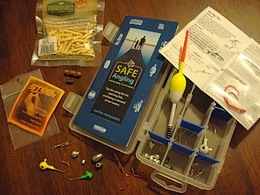 On the heels of safe sex comes “
On the heels of safe sex comes “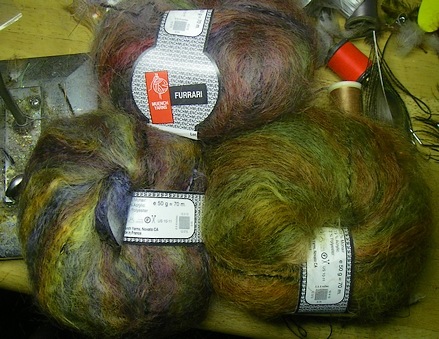
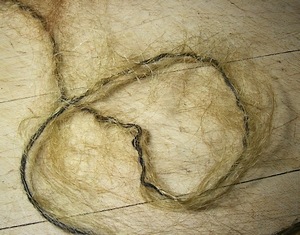 It’s the Poor Man’s Seal substitute, offering the same loft and spike yet absent the transparency and guilt associated with clubbed orphans.
It’s the Poor Man’s Seal substitute, offering the same loft and spike yet absent the transparency and guilt associated with clubbed orphans.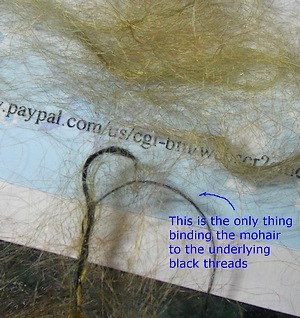 The range of colors is the real bargain. Each color is about a foot long before transitioning to the next, plenty to wind a large fly body or yank off as a handful of dubbing.
The range of colors is the real bargain. Each color is about a foot long before transitioning to the next, plenty to wind a large fly body or yank off as a handful of dubbing.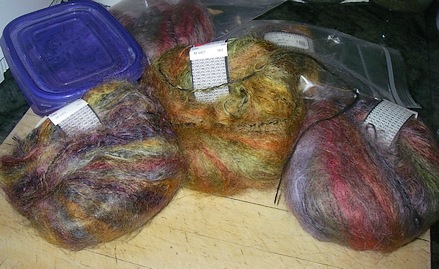

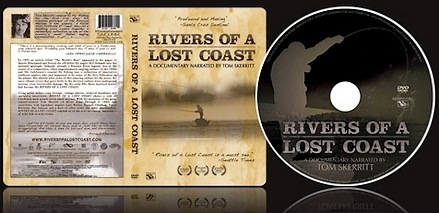
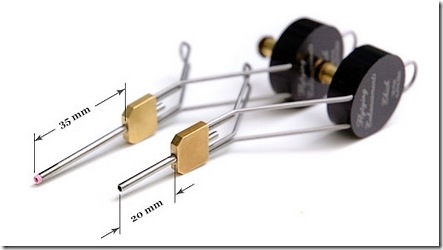

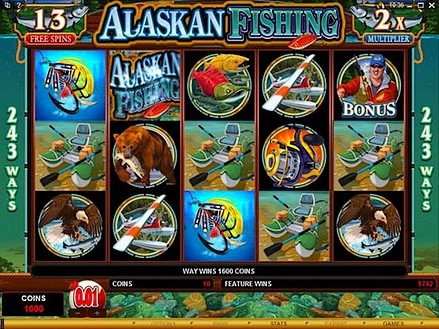

 … not to mention the fumes, which
… not to mention the fumes, which 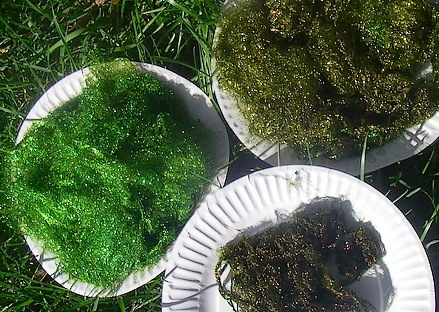
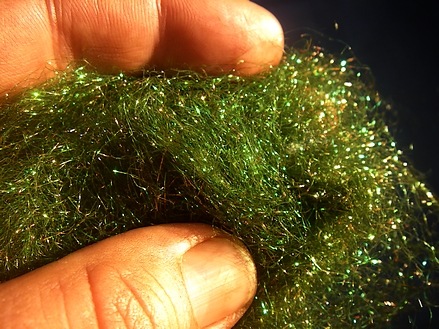
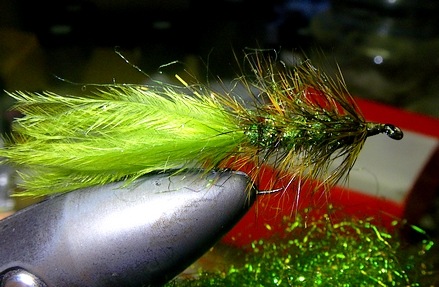
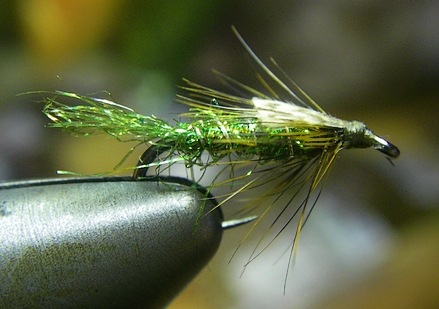
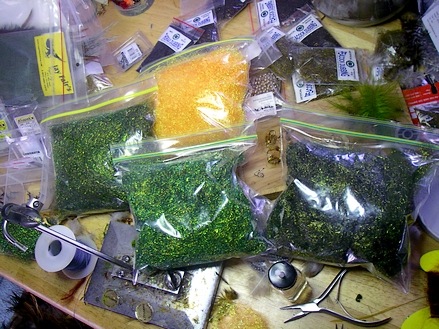
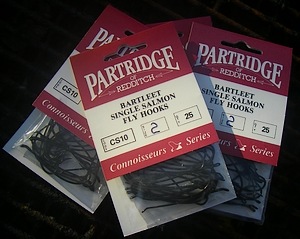 Recent developments in Europe has the Partridge Hook company returning to UK ownership. Purchased by Fishing Matters, manufacturers of the Varivas and Order hooks.
Recent developments in Europe has the Partridge Hook company returning to UK ownership. Purchased by Fishing Matters, manufacturers of the Varivas and Order hooks.